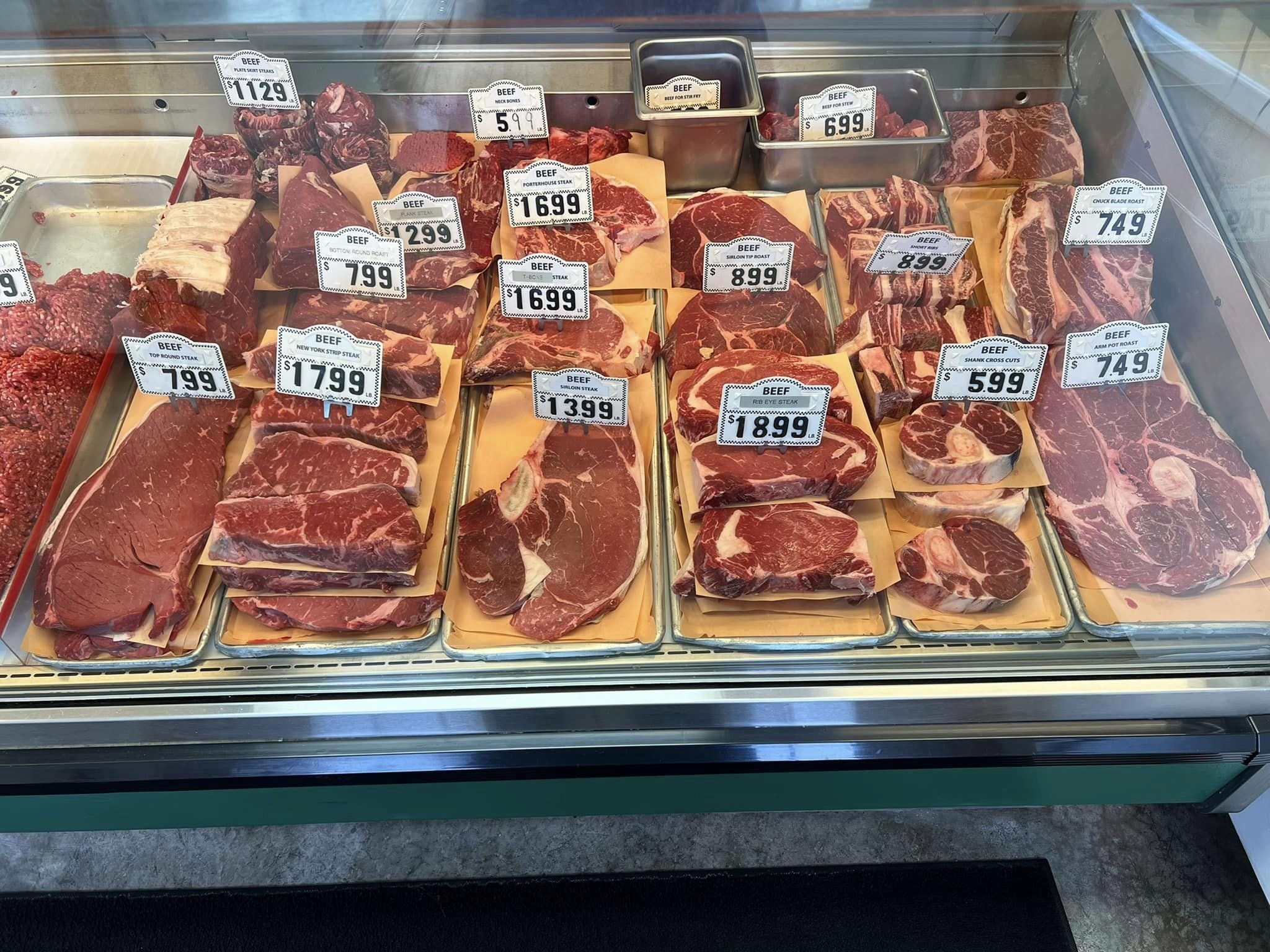Reveal the Art of the Butcher's Cut in a Modern Meat Market
In the ever-evolving landscape of contemporary meat markets, the butcher's cut has actually transcended its standard origins, combining old-time workmanship with modern methods. bagley farms meat market edwardsville il. Today's butchers are not merely processors of meat; they are experienced artisans that emphasize sustainability and ethical sourcing. Their knowledge in picking and preparing cuts tailored to specific culinary requirements offers an unmatched eating experience. What absolutely sets the modern butcher apart is their ability to create a much deeper link in between consumers and the beginnings of their meat. How do these masters equilibrium custom with advancement, and what effects does this have for the future of meat intake?
Development of Butchery Techniques

The mid-20th century saw butchery methods better fine-tuned by scientific insights right into muscle biology and meat aging, improving both tenderness and taste. Developments like vacuum cleaner product packaging and refrigeration prolonged item shelf-life, permitting butchers to expand offerings and enhance quality assurance. This duration also marked the rise of specific devices, such as band saws and meat slicers, which raised accuracy and efficiency in meat processing.
Digital systems currently aid in tracking animal provenance and optimizing cuts to meet particular customer preferences. Furthermore, a renewal in artisanal butchery has actually arised, mixing typical abilities with modern understanding to cater to consumers seeking honest and lasting meat choices.

Recognizing Meat Cuts

Recognizing the intricacies of meat cuts is essential for both butchers and consumers seeking top quality and value. Each cut comes from a different component of the animal, imparting unique flavors, textures, and cooking methods. Proficiency of these distinctions not just improves cooking experiences however also optimizes the utility of each carcass. For butchers, precise cuts mirror ability and regard for the craft, making certain marginal waste and ideal yield.
The key classifications of meat cuts include primitive, sub-primal, and retail cuts. Butchers after that break these down further right into sub-primal cuts, prior to ultimately generating retail cuts readily available to customers, like ribeye or tenderloin.
Understanding muscle mass structure is important; muscle mass made use of much more frequently by the animal tend to be tougher and are best suited for sluggish cooking approaches, while less-used muscles, like those discovered in the loin, are more tender and suitable for grilling or roasting. Familiarity with these differences encourages customers to make informed selections, improving their culinary undertakings.
Choosing High Quality Meat
Choosing the ideal meat involves more than just picking an aesthetically appealing item from the screen. The art of picking quality meat requires a discerning eye and expertise of particular qualities that signify freshness and quality.
Secondly, think about the marbling, which describes the white streaks of fat within the muscle. Proper marbling is an essential indication of inflammation and taste, as it thaws throughout cooking, improving the meat's juiciness. Remember, higher marbling often associates with superior quality cuts, such as USDA Prime.
Structure is another crucial find more info aspect; meat must feel firm to the touch, not slimy or extremely soft. Additionally, be mindful of the scent. Fresh meat must have a tidy, neutral smell, without any type of sour or off-putting odors.
Pairing Cuts With Cooking Methods
Successfully coupling cuts of meat with the appropriate cooking techniques is important for attaining optimum flavor and appearance. Different cuts differ in inflammation, marbling, and connective cells web content, each needing specific strategies to open their possibility. Tender cuts like filet mignon and ribeye, with their intrinsic marbling, advantage from high-heat, quick-cooking techniques such as cooking or pan-searing. These techniques improve the meat's all-natural tastes and guarantee a juicy surface.
Alternatively, tougher cuts like brisket and chuck roast are rich in collagen, which damages down right into jelly when prepared slowly. These cuts are suitable for braising or slow roasting, allowing the meat to tenderize in time and create deep, complex flavors. Cuts such as brief ribs and pork shoulder get on well with slow-cooking techniques, where prolonged cooking times transform their robust appearances right into succulent dishes.
Lamb shanks and oxtail, which need long term cooking to soften, are perfect prospects for cooking or sluggish simmering. These techniques coax out abundant, hearty flavors while keeping dampness. By recognizing the one-of-a-kind features of each cut, chefs and home cooks alike can boost their cooking developments, guaranteeing each meal is both pleasing and remarkable.
The Butcher's Function Today
Navigating the progressing landscape of the contemporary meat market, the butcher's function today expands beyond mere preparation of cuts. Contemporary butchers are culinary craftsmens, instructors, and advocates for sustainable techniques. They link the gap between the farm and the fork by guaranteeing moral sourcing, recognizing animal husbandry, and prioritizing transparency in the supply chain. This change reflects the expanding consumer need for quality over amount, where provenance and animal welfare are vital.
In hop over to here addition to crafting accurate cuts, butchers now engage straight with customers, providing cooking suggestions and customizing options to match individual demands and preferences. Their experience in meat aging, marbling, and flavor accounts empowers consumers to make enlightened choices, enhancing their culinary experiences. This personalized service exhibits the butcher's evolving role as a relied on expert in the kitchen area.
Additionally, butchers are pivotal in decreasing waste, making use of whole pets to produce diverse products such as sausages and stocks - bagley farms meat market edwardsville il. This thorough approach not only values the animal however also straightens with contemporary sustainability goals. By doing this, the modern butcher personifies this post both custom and development, adapting to an ever-changing market while preserving the virtuosity and honesty of their craft

Final Thought
Mastery in understanding varied meat cuts and quality signs equips butchers to provide informed referrals, straightening specific cuts with optimal cooking techniques. By recognizing historical practices while embracing modern needs, the butcher's duty stays vital in today's advanced meat market.